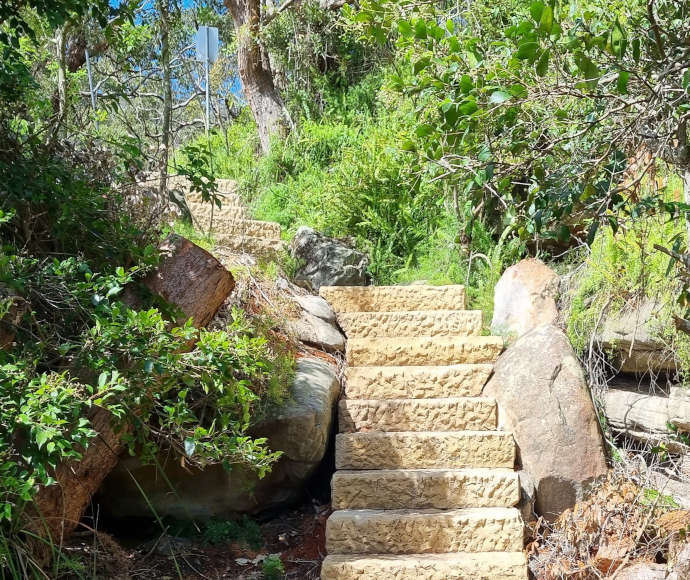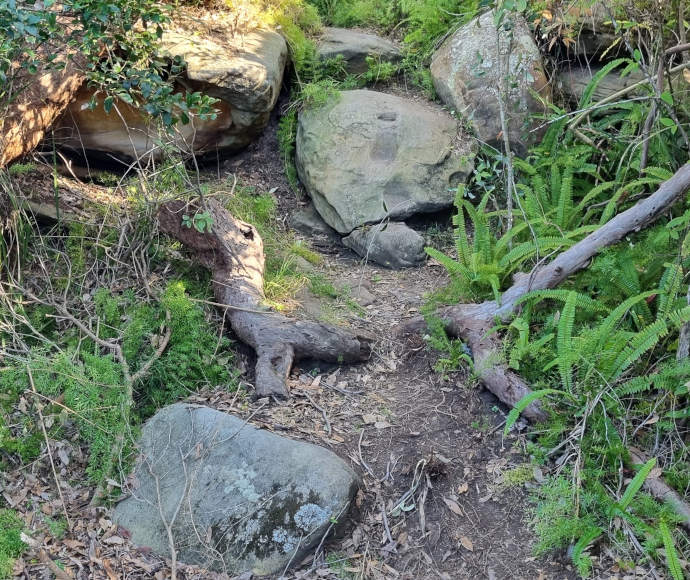The longest section of the new walk between Middle Head and Georges Head opened for visitors in December 2023.
Visitors can now walk from Chowder Bay, past the Georges Head casemates and Obelisk Bay, to the 1801 Battery and back to Middle Head Road via the Don Goodsir Track.
What's next
The construction of the final section of the walking track connecting 1801 Battery to Outer Middle Head is underway. The route has been cleared and materials dropped along the alignment.
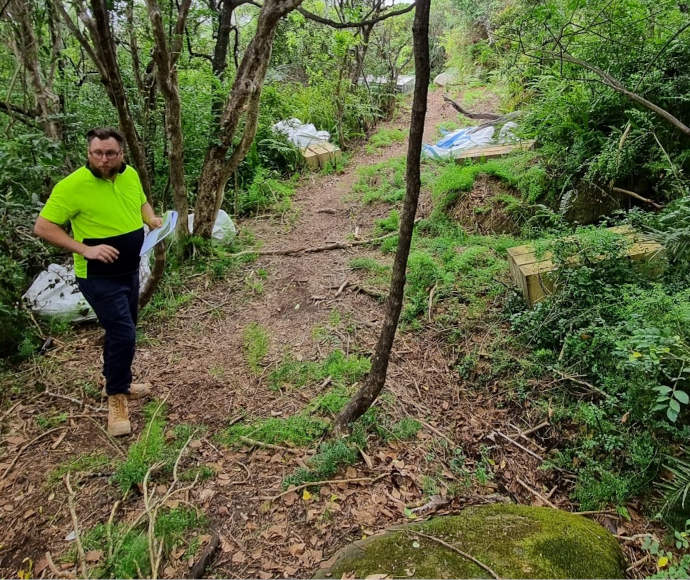
The walking track alignment cleared with materials dropped along the route.
A new bridge to provide access over the outer defensive ditch will be fabricated off-site from March 2024 and installed before the end of June.
The platform for the disappearing gun emplacement at Inner Middle Head is being fabricated off-site and will be installed from March 2024.
Revealing the inner defensive ditch
The inner defensive ditch was one of 2 excavated across the headland in the 1870s to protect the coastal fortifications from potential enemy landing parties approaching from Cobblers Beach or along Middle Head Road.
But, as the need for landward protection waned, so too did maintenance, and there is photographic evidence that, by 1955, the ditch had started to fill up with soil and vegetation. By the time the land was transferred from the Commonwealth, the inner ditch was largely buried.

Constructed in the 1870s, the outer fortifications at Middle Head were protected by 2 defensive ditches.
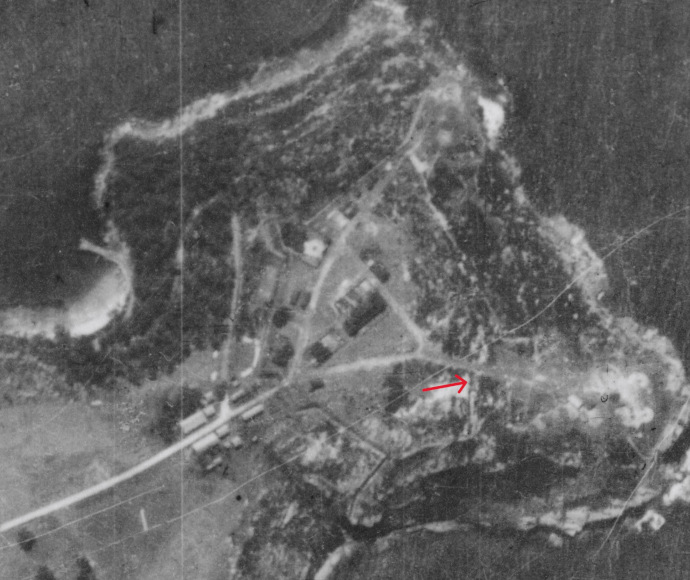
The earliest image of part of the inner defensive ditch, 1930.
The new track will cross the outer defensive ditch but then enter and traverse the inner defensive ditch to provide visitors with an appreciation of the purpose and effectiveness of these defences from another age.
Excavation of the ditch, with approval from Heritage NSW and under archaeological supervision, was carefully carried out in December.
An assortment of random artefacts, including bottles from the 1930s, rusty fragments of a star picket, a wrench and roller skates, ceramics, and plastic rifle blanks (which were only invented in the 1950s), suggests the ditch was used as a rubbish dump. The items were assessed and documented by archaeologists.
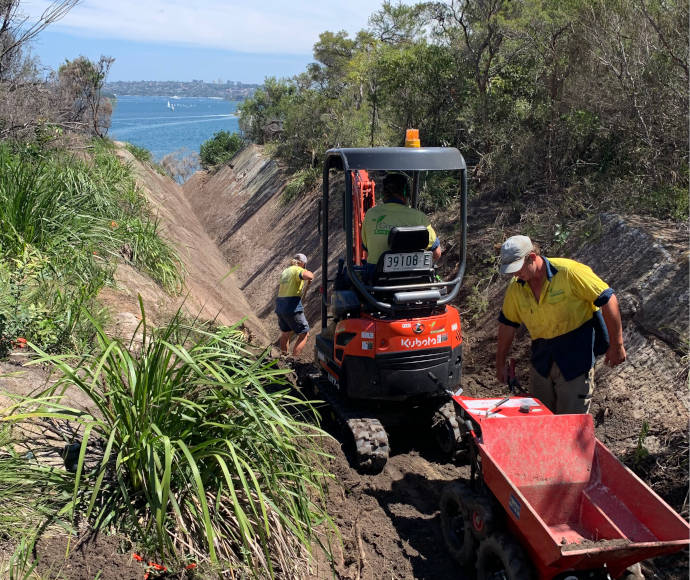
The inner defensive ditch is revealed for the first time in over 60 years.
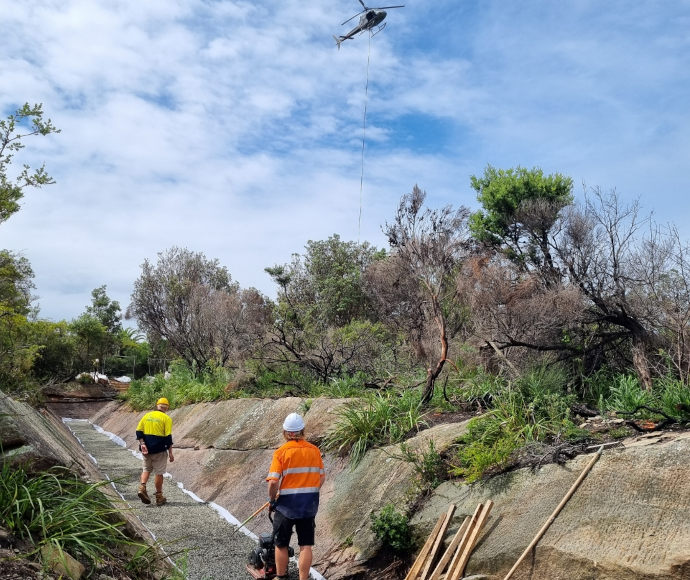
The ditch will form part of the new walking track.
The bottom of the ditch has been protected with geo-fabric and then filled with gravel to provide a level surface for the fibre-reinforced plastic boardwalk to be installed without the need for fixings.
